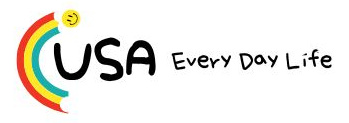HELOCs, or home equity lines of credit, give homeowners a way to leverage the growing value of their house for anything from renovations to college tuition — and enjoy 10 years of interest-only payments.
Plus, unlike with a home equity loan, they only have to repay what they use, rather than a large lump sum.
Rates on HELOCs have been decreasing precipitously since last summer, according to a Bankrate survey: On Aug. 6, 2025, the average was 8.13% for a $30,000 HELOC, compared to 8.25% for the same-sized home equity loan.
Thinking about a HELOC? Here’s how to calculate your payments during both the draw and repayment periods.
What is a HELOC
A HELOC is a revolving line of credit secured by the borrower’s house. Typically, homeowners have 10 years to draw on the account and only make interest payments. If they do make principal payments during the draw period, though, they can tap that credit again.
Once the draw period ends, they’ll begin making full principal-and-interest payments during the repayment phase, which usually lasts 20 years.
Lenders can approve HELOCs from $10,000 to $100,000, and some will go considerably higher. The funds can be used for any purpose, but the interest is only tax-deductible if the money goes toward home improvements.
Since it’s a secured loan, interest rates on a HELOC are lower than with other kinds of financing. On Aug. 6, 2025, the average HELOC interest rate was 8.13%, compared to 12.58% for personal loans and 23.99% for credit cards.
But being secured also means the lender can foreclose if the homeowner fails to make on-time payments on their HELOC.
How to calculate your HELOC payments
The monthly payment on a home equity line of credit is determined by the loan amount and the interest rate. It also depends on whether the borrower is in the draw period or the repayment period.
We’ll illustrate how to calculate both with this example: A homeowner who has withdrawn $45,000 from a HELOC with a fixed 8.3% interest rate, a 10-year draw and a 20-year repayment period.
A. During the draw period
For the first 10 years, the borrower only has to make payments on the interest that’s accrued. Here’s the equation to use to determine the monthly payment.
Interest-only annual payment = amount owed x interest rate ÷ 12
$3,735 = $45,000 x 0.083 ÷ 12
Using the example above, the borrower would owe $3,735 annually during the draw period, or about $311 a month.
B. During the repayment period
Calculating payments in the repayment phase requires two equations, one for the total balance and another for the amount due each month.
Assume the borrower has remained current on their interest payments and is now starting with a principal of $45,000.
First, calculate their total balance owed, including interest:
Total balance = principal amount (1+ (interest rate x number of years in repayment))
- Multiply the interest rate by the number of years in repayment, or 0.083 x 20, to get 1.66.
- Add 1 to 1.66 to get 2.66.
- Multiply 2.66 by $45,000 to get $119,700, which is the total principal and interest due during the repayment term.
To calculate your monthly payment, divide the balance owed by the number of monthly payments. (In the case of a 20-year repayment term, there will be 240 monthly payments.)
Minimum monthly payment = total balance ÷ months in repayments
Divide $119,700 by 240 to get $498.75, the minimum monthly payment for 20 years.
Subscribe to the CNBC Select Newsletter!
Money matters — so make the most of it. Get expert tips, strategies, news and everything else you need to maximize your money, right to your inbox. Sign up here.
HELOC FAQs
How does a HELOC work?
A HELOC is a line of credit backed by the value of a borrower’s home. They can withdraw however much they need, up to the maximum credit limit, for 10 years. During that draw period, they only pay interest. Once the draw period ends, they’ll begin the repayment phase and make full principal and interest payments for the remainder of the term (typically 20 years).
How does a HELOC differ from a home equity loan?
A HELOC is a revolving line of credit, while a home equity loan is a lump sum of funding. With a HELOC, borrowers have 10 years to withdraw from the line of credit, up to its maximum, and during this time, they’ll only make interest payments. Then, a 20-year repayment period begins.
Borrowers with a home equity loan start making payments as soon as they get the funds, typically for 30 years.
Should I pay more than the minimum on a HELOC?
If you pay more than the minimum required, you’ll pay less in interest over time and earn equity in your home faster. That means you’ll get a larger share of the sale price when you sell and your credit score will rise faster, too.
If you pay more than the minimum, however, make sure to tell your lender that the funds should go to the principal and not interest.
How long does it take to close on a HELOC?
It typically takes two to six weeks to close on a HELOC, but some lenders promise closing in as little as five days.
Why trust CNBC Select?
At CNBC Select, our mission is to provide our readers with high-quality service journalism and comprehensive consumer advice so they can make informed decisions with their money. Every mortgage article is based on rigorous reporting by our team of expert writers and editors with extensive knowledge of mortgage products. While CNBC Select earns a commission from affiliate partners on many offers and links, we create all our content without input from our commercial team or any outside third parties, and we pride ourselves on our journalistic standards and ethics.
Catch up on CNBC Select’s in-depth coverage of credit cards, banking and money, and follow us on TikTok, Facebook, Instagram and Twitter to stay up to date.
Editorial Note: Opinions, analyses, reviews or recommendations expressed in this article are those of the Select editorial staff’s alone, and have not been reviewed, approved or otherwise endorsed by any third party.





